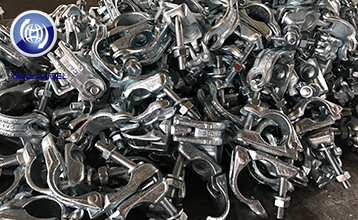Coking coal winter storage market can be expected
Oct. 15, 2020
Generally, before the winter snow comes, due to the influence of weather factors, coking enterprises will carry out winter storage in advance. This kind of short-term centralized replenishment behavior will help the price of coking coal. Looking ahead, in the context of high profits for coking companies and low coking coal inventories, coking coal will continue to maintain its strength.
Looking back in the third quarter, in the case of oversupply, the price of coking coal has been oscillating at a low level. Although there has been a rebound during this period, they all returned to the original point in the end. Take the low-sulfur main coking coal quotation produced in Luliang as an example. At the end of June, the price was 1050 yuan/ton, which was a new low in the past five years. Then it rose slightly for two rounds and rebounded to 1100 yuan/ton. After that, the coke price fell again after weakening. As of the end of September, the price was 1070 yuan/ton. Although downstream coking companies maintained high demand, they always purchase on demand, failing to boost coking coal prices. At present, as the winter enters, steel mills and coking enterprises have begun to carry out winter storage, demand is much higher than the previous level, upstream inventory has also begun to shift downstream, which will help coking coal prices gradually stabilize and strengthen.

In terms of imports, due to policy interventions, it did not maintain the characteristics of high imports in the third quarter of previous years. The overall decrease was 3 million to 4 million tons compared with the same period last year. However, due to the large volume of imports at the beginning of the year, the cumulative annual decrease was 300,000 to 400,000 tons compared with the same period last year. It is expected that the fourth quarter will continue to maintain reduced imports, and the import volume will be about 10 million tons. From the point of view of importing countries, Australia is the key control object. Data shows that imports in August were more than 1.4 million tons lower than in July. It is unlikely that the Australian policy will change in the fourth quarter, and it is estimated that the import of Australian coal will continue to be reduced. Compared with Australian coal, Mongolian coal is the object of encouraging imports. From the beginning of the year to the middle of the year, the import volume has been in a process of continuous growth. The import situation of reducing Australia and increasing Mongolia, to a certain extent, prevents Mongolian coal production from being able to replace Australian coal in sufficient quantities, which will result in a reduction in overall imports. It is expected that the reduction in the fourth quarter will be 2 million to 3 million tons.
In terms of steel mills, after the early steel mills actively replenish the inventory, they are now about to reach a normal level. As of September 25, the coking coal inventory of steel mills was 8,368,400 tons, an increase of 429,600 tons or 5% compared to the beginning of July. It is expected that the steel mills will maintain normal purchases after a brief replenishment in the fourth quarter.
In terms of ports, the domestic coking coal has been in a weak position, the enthusiasm for importing has weakened, and the port coking coal inventory has been declining. In the future, under the active downstream replenishment, port inventory will also increase.
On the whole, although the trend of coking coal in the third quarter was relatively weak, due to seasonal factors in the fourth quarter, downstream steel mills and coking enterprises will actively replenish their inventory. At that time, port inventory will continue to shift downstream, and coking coal prices will remain strong. Therefore, coking coal will remain relatively strong in the fourth quarter after the shift in the right to speak up and down.
In terms of risk control, coking companies will actively replenish coking coal from November to December. The strategy is initially applicable to the next 2-4 weeks, and then adjusted according to market changes. The maximum unilateral position does not exceed 1/3, the hedge position does not exceed 2/3, and the maximum backtest does not exceed 25% of the funds occupied by the strategy.



